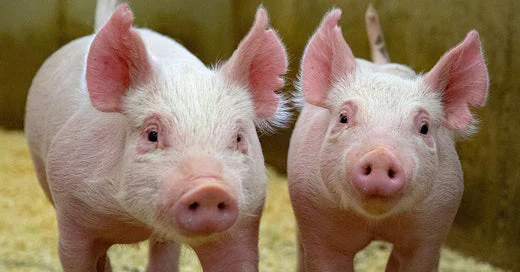How to Choose the Rigth Type of Pig Feeds

Pig feeds today come in various forms to suit different needs. Kalmbach Feeds® offers multiple types of pig feeds, including pellets, meal feeds, and cubes. Choosing the right type of pig feeds depends on factors like age, size, and feeder type.
Types of Pig Feeds
Your pig’s age and feeding environment play a big role in selecting feed. For floor or outdoor feeding, meal or mash feed can lead to waste. Pelleted feeds or cubes are better options as they are easier to consume. Young pigs starting on feed require balanced nutrients and should avoid sorting through meals. This is why most nursery pig diets are pelleted. As pigs grow and use feeders, meal feeds often become a more cost-effective choice.
Choosing the Right Pig Feed
Pelleted feeds improve feed conversion by 5-8% for finishing pigs in trials. However, high feed costs have pushed producers to evaluate the economics of feeding pellets. Factors like feed processing costs, particle size, pellet quality, and ingredients influence this decision.
Pellets with smaller particle sizes (<400µ) enhance digestion and nutrient absorption. In contrast, meal feeds typically have larger particles (600-700µ). While smaller sizes improve efficiency, they can increase the risk of ulcers. High-quality pellets reduce this risk while improving growth and minimizing waste.
Pellet quality impacts growth performance significantly. Poor-quality pellets with excessive fines lead to sorting and waste. To ensure quality, consider factors like temperature, ingredients, and die thickness during processing.
Choosing the right type of pig feeds ensures better efficiency, less waste, and healthier pigs.

The types of ingredients used when formulating pig diets also plays a key role in pellet quality and diet costs. Ingredients that would be considered byproducts, like Dried Distiller Grains and Solubles (byproduct of ethanol) and wheat middlings (byproduct of flour milling), are potential cost savers in pig diet formulations. It is, therefore, important to be aware of how these ingredients may affect pellet quality. For example, diets containing more than 7% fat probably won’t make good pellets; and diets containing more than 18% fiber will most likely not push through the pelleting die. However, including a limited amount of higher fiber ingredients, such as wheat middlings, can help bind ingredients and make stronger pellets.
Two pelleting experiments were conducted by M.L. Potter et al., (2010) at Kansas State University. Experiment 1 evaluated the pelleting of corn-soybean meal-based diets, while experiment 2 evaluated the pelleting of diets containing multiple by-products. Pellet durability index (PDI) was recorded at the mill, pictures of feeders were taken, and growth performance was measured. Pelleting produced an improvement in the growth performance of the pigs in both experiments. However, more fines were observed at the feeder with the diets that contained by-products and, therefore, the level of improvement in pig growth performance was lower as compared to pigs fed the pelleted corn-soy diets.
Still Not Sure What to Choose? We’re Here to Help!
Kalmbach Feeds® has conducted its own research within our research facilities to measure effects of pellets vs. meals and pellet size on nursery pig growth performance in order to optimally formulate pig feeds for our customers.
We have a full staff of swine nutritionists that can help answer any questions you may have and help you pick the feed that is best for your operation and pigs.
Article Source: Julie Salyer – Swine Nutrition team here at Kalmbach Feeds